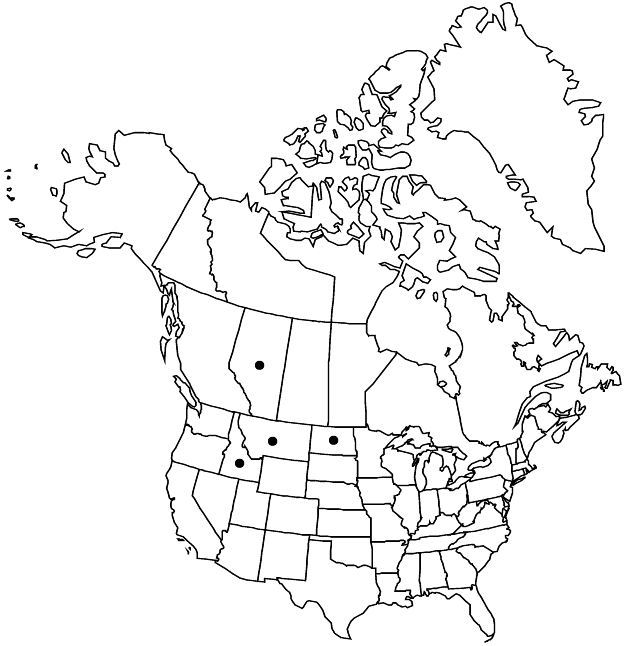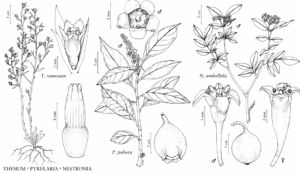Thesium ramosum
J. Bot. (Schrader) 1800(1): 30, plate 7 [left]. 1800.
Herbs, 15–40(–70) cm. Stems: caudex relatively unbranched, to 15 mm diam.; aerial stems 20–100+, to 2 mm diam. Leaves: blades scalelike proximally, linear to falcate distally, 30–45(–91) × 1–3 mm; margins minutely serrulate; midvein prominent, lateral veins less prominent or absent. Inflorescences 10–20 cm; bract lanceolate, 1.2–3 times flower length; bracteoles linear, 0.5–1 times flower length. Flowers bell- or funnel-shaped, 3–4 mm; hypanthium 1 mm; petals white with green central adaxial stripe, 1–1.3 mm, margins with small lobes; stamens 1.5 mm, exserted; style plus stigma 1.5 mm. Pseudodrupes brown, 2–3 mm, longitudinally striate, glabrous; swollen pedicel reddish brown or amber, 1.5–2 mm; persistent perianth remnants 1–2 mm.
Phenology: Flowering summer.
Habitat: Riparian areas, dry, rocky slopes, roadsides, pastureland, open fields.
Elevation: 450–1800 m.
Distribution

Introduced; Alta., Idaho, Mont., N.Dak., Eurasia.
Discussion
The native range of Thesium ramosum is in temperate Eurasia from the Balkans to Siberia (R. Hendrych 1964; A. G. Miller 1982). The species was first reported in North America in 1943 from Towner County, North Dakota. An herbarium specimen collected in 1993 (at RM) documents its occurrence in Teton County, Idaho. Later it was recorded also from Madison and Teton counties, Montana (L. J. Musselman and S. C. Haynes 1996) and in 2001 discovered near Calgary, Alberta, where it is well established in and around Fish Creek Provincial Park (I. D. MacDonald, pers. comm.). The historical data suggest that this species has potential for significant range expansion within North America. The diversity of hosts recorded for the Montana population indicates that it is a host generalist.
The North American plants were originally reported to be Thesium linophyllon (T. Van Bruggen 1986), but L. J. Musselman and S. C. Haynes (1996) determined that they are either T. arvense or T. longifolium. A DNA sequence from the Montana population was identical to that of T. ramosum from Eurasia (M. García, pers. comm.). The North American populations differ from the Eurasian ones in bract size, persistent perianth remnant length relative to the pseudodrupe length, and fleshy pedicel color, but the significance of these features in this polymorphic taxon is not clear.
Thesium ramosum is called T. arvense Horvátovszky in many European and North American publications, all following the recommendation of R. Hendrych (1961). That name, as pointed out by W. Gutermann (2009), is a superfluous new one for a Linnaean species and is therefore illegitimate.
Selected References
None.
